Hellfire
Satanism, blackmail, and high society...
“Better to reign in HELL than serve in Heav’n.”
— Lucifer, Paradise Lost
Related Entries
One of the hotly disputed topics by those who study occult and secret societies is the inescapable allegations of Satanism, sexual impropriety, & ritual abuse that have plagued these organizations throughout the ages. The reasons for this are manifestly clear once the meaning of its hidden symbolism has been unveiled: the Mystery Religion, of which Masonry is the intellectual if not spiritual descendant, is at its heart a sex cult; a worship of the so-called “divine feminine” as well as the “divine masculine”. This fascination both with blood rituals and degenerate sexual practices — such as sodomy, incest, & necrophilia — stems partially from the progenitor myths of Nimrod, Semiramis, & Tammuz. For myriad reasons, both carnal and spiritual, this fixation upon deviancy thusly plays out within the pageantry & symbolism of the Mystery Religion’s many damnable offspring.
Of the many great sins of the Hebrews that led to the first destruction of Israel and Jerusalem, ritual child sacrifice ranks amongst the most heinous. In front of brazen altars dedicated to Moloch, Hebrew children would be thrown into burning sacrificial pits; their piercing cries drowned out by the rhythmic drumming of infernal priests (Ezekiel 23:37). Inside Solomon’s Temple, pagan rituals to the fallen angelic host and demonic idols of Canaan were conducted with regularity (Ezekiel 8). The rulers of Israel had abandoned the one true God, reveling in the ritual murder of their offspring and the Gnostic teachings of Babel.
It is a sin that the West’s parasitic and vampiric rulers are just as guilty of.
— The owl statue of Bohemia at the Bohemian Grove. In antiquity, the Canaanite deity Moloch was anthropomorphized as both a bull and an owl.
— Ronald Reagan (33°), Gerald Ford (33°), and Richard Nixon at the Bohemian Grove, 1967.
— The Bush’s (Bonesmen) at Bohemian Grove, 1995.
While the Bohemian Club or NXIVM are some of the more well known hedonistic elite fraternities in modern times, there is a storied legacy of similar groups throughout the last five centuries of Christendom. Not only is this phenomenon remarkably prevalent, but the influence of these clandestine covens within the highest sectors of society transcends eras. Arguably, the most infamous of these groups was the Hellfire Club of 18th-century England. Upon delving into the annals of this club, one must navigate a labyrinthine network of historical accounts, rumors, and conjecture that continues to shroud this clandestine society in an aura of mystery.
At the center of this enigma stands Sir Francis Dashwood — a figure whose life and actions serve as a prism through which the complex interplay of Satanism, occultism, Masonry, and politics can be examined (emphasis mine):
[Dashwood] was one of the most influential figures of the 18th Century. He created the notorious Hell-Fire Club, an association dedicated to Black Magic, sexual orgies, and political conspiracies. The club included among its members the Prime Minister of England, the Chancellor of the Exchequer, the Lord Mayor of London, the First Lord of the Admiralty, the son of the Archbishop of Canterbury, several of England’s greatest artists and poets, the Prince of Wales, and even Benjamin Franklin. The American Revolution has been attributed as the indirect product of this uncanny group.
— The Hellfire Club
The Hellfire Club, officially known as the Monks of Medmenham Abbey or The Knights of St. Francis, emerged as a haven for Dashwood and like-minded individuals to indulge in their hedonistic philosophies and occultic beliefs. The club's gatherings were held 33 miles northwest of London in the secluded environs of Medmenham Abbey, eventually becoming legendary for their extravagance and debauchery. The club's rituals and ceremonies habitually invoked imagery and symbolism associated with the occult, including elements of astrology, Masonry, and Satanism.
A thorough analysis of its symbols will reveal the Hellfire Club’s roots as one strongly influenced by Western occult traditions such as Freemasonry, alchemy, and Kabbalah (Loughran, 2010).
“I have found Christian dogma unintelligible. Early in life, I absenteed myself from Christian assemblies.”
— Benjamin Franklin, Freemason & Member of the Hellfire Club
Starting in 1602, various groups (perhaps a singular one) calling themselves the Damned Crew terrorized the streets of London off and on for years; subjecting its citizens to random acts of violence in between their orgiastic escapades. By 1653, the term “hell-rake” had been coined for this particular brand of street hooligan, one who not only engaged in brazen acts of licentiousness but also had a particular fondness for acts of impiety and blasphemy. As a general rule of thumb, the members of these clubs were practically all wealthy young noblemen, and as such they were virtually immune from prosecution.
Philip, Duke of Wharton, emerges as one of the most striking figures in this history, embodying the intricate tapestry of his era's political and clandestine intrigues. Wharton, the future Grand Master of the Grand Lodge of England, met the “King over the Water”, James Edward Stuart, at Avignon in 1716. During this meeting, Stuart also bestowed the title of Duke of Northumberland on him, as well as awarding Wharton the Order of the Garter. According to various Masonic traditions, it also during this time period that the Duke either founded or became the first Grand Master of the Grand Loge de France. His Masonic ties during this period hint at the esoteric knowledge and covert networks that have shaped the foundations of the modern era. Within the hidden folds of Jacobite affiliations and Masonic intrigues, Wharton's presence looms, a shadowy figure dancing on the precipice of rebellion.
— A Rake’s Progress, 3: The Tavern Scene, ill. by William Hogarth.
Central to Wharton's enigmatic legacy is the creation of the original Hellfire Club in 1718, a secret society steeped in mystery and debauchery. Here, amidst flickering candlelight and whispered oaths, the Duke orchestrated rituals that fused hedonism with occult symbolism. In A System of Magic, the novelist Daniel Defoe described his attendance at a meeting of this sort, involving “a pagan circle, near Old Charing, where God was owned, sworn by, imprecated, blasphemed, and denied, all in one breath.” Members of the club dressed as Biblical figures during these damnable rituals, making a mockery of both Christ and His servants.
Beyond his political and occult pursuits, Wharton's life was also marked by a reputation for sexual promiscuity and scandalous liaisons. He was a close confidante and associate of the infamous Colonel Charteris, a hell-rake known as “The Rape-Master General”. Wharton’s sexual liaisons and degenerate lifestyle further fueled the rumors and legends that surround him, painting a portrait of a man who lived life on the edge. These rumors came to a head in 1721 when the Hellfire Club was disbanded by King George I via Royal Decree:
His Majesty have received Information, which gives great Reason to suspect that there have lately been and still are, in and about the Cities of London and Westminster, certain scandalous Clubs or Societies of young Persons who meet together, and in the most impious and blasphemous Manner, insult the most sacred Principles of Holy Religion, affront Almighty God himself, and corrupt the Minds and Morals of one another…
— 1721 Act for the More Effectual Suppressing of Blasphemy and Profaneness
Wharton's enigmatic persona, intertwined with Masonic lore, Jacobite intrigue, and the dark allure of the Hellfire Club, epitomizes an era fraught with clandestine ambitions & secret societies.
Modern historians will often dismiss these blasphemies and Satanic imagery as merely regressive or antisocial acts in defiance of societal norms. These explanations are too clever by half: by focusing on their mockery of the Mass, we are forced to dismiss, by omission, the clear occultic and esoteric symbolism at the heart of the Hellfire Club’s rituals. To some, the deification of Lucifer as the giver of light, i.e. forbidden knowledge, is seen merely in the symbolic sense.
This is perhaps one of the most pernicious lies the occultist wields: there is no such thing as the symbolic worship of Lucifer; to deny Christ is to be Antichrist.
“Tis’ astonishing the lengths Francis will go simply to be nasty.”
— John Wilkes, Freemason & Member of the Hellfire Club
Sir Francis Dashwood, the 15th Baron le Despencer, is best known for founding the more infamous and well-known successor chapter to the Hellfire Club. Born into a prominent English family, Dashwood's early years were marked by privilege and education. His journey into the realms of occult and esoteric knowledge began during Dashwood’s travels across Europe, where he encountered diverse philosophical and mystical traditions. His clandestine society, established sometime during the late 1730’s to mid 1740’s, gained notoriety for its hedonistic and debauched gatherings where members indulged in various forms of vice and excess. Dashwood was the driving force behind this secret society, one which attracted many powerful aristocrats, intellectuals, and elites of the time.
Its most notable members include:
Sir Francis Dashwood, future Chancellor of the Exchequer
John Montagu, The Earl of Sandwich, future Lord of the Admiralty
John Stuart, The Earl of Bute, future Prime Minister of England
Paul Whitehead, secretary & Master of Ceremonies
Charles Churchill (of no relation to Winston)
Thomas Potter, son of the Archbishop of Canterbury
John Wilkes, Radical politician and ancestor of John Wilkes Booth
George William Frederick, the Prince of Wales & future King George III
Benjamin Franklin, American spy and Freemason
Chevalier D’Eon, the infamous crossdressing French spy
The Marquis de Sade, a prolific pornographer and sexual deviant
— Portrait of Francis Dashwood, ill. by William Hogarth.
The Hellfire Club, officially known as the Order of the Friars of St. Francis of Wycombe, operated under a veil of mystery. Its meetings were held in secluded locations, such as Dashwood's estate at Medmenham Abbey. The initial acquisition of Medmenham was shrouded in secrecy, with Dashwood navigating the intricacies of simultaneously purchasing the dilapidated church and excavating a massive subterranean cave complex. The reconstruction unfolded with clandestine choreography: craftsmen were summoned from distant corners of the British Isles, sworn to silence and guarded with vigilance, as if their very hands bore the weight of forbidden knowledge.
The Abbey itself became a blasphemous tableau for Dashwood and his acolytes, with various occult traditions represented in its architecture. The western portico was a carbon copy of the Temple of Bacchus in Greece, and its interior was even more grotesque:
Over the entrance of the abbey was inscribed “Fay ce que voudras” (“Do what thou wilt”)…
On one side of the door was a statue of Harpocrates, the Egyptian god of silence, with his finger to his lips, and on the other side a statue of Volupian Angerona (the goddess of secret passion) in the same attitude.
— The Hellfire Club
The chapel within Medmenham contained stained glass windows portraying Christ’s Apostles in various profane postures. Its ceiling was adorned with a vibrant fresco, the subject lost to time but whispered to be a recreation of abject sexual horror. John Wilkes, known for his open defiance of morality, reportedly recoiled at its sight, labeling it as "unspeakable". Inscribed above the chapel’s entrance, this haunting Latin inscription bore witness as a warning to the profane masses:
“Stranger, refuse, if you can, what we have to offer.”
— Map of the Hellfire Caves.
Down the hill from this infernal chapel lies the Hellfire Cave complex, its tunnels adorned with demonic faces, phallic symbols, and Masonic imagery. Navigating the labyrinthine depths of West Wycombe's underground chambers, one traverses from the Entrance Hall through various points of significance, including Lord Sandwich's Circle, Franklin's Cave, the Children’s Cave, and the Banqueting Hall; before finally arriving at the Triangle. After passing over the River Styx, the journey ends in the Inner Temple: the dark heart of this demonic shrine.
This subterranean journey was a symbolic mirroring of Greek mythology, with the River Styx symbolizing the boundary between mortal existence and Hades. Amongst the rituals that would take place in this hellish clubhouse was the Black Mass, a satanic inversion of the Catholic liturgy:
The Mass was celebrated on the body of a naked woman laid out on the altar and the congregation drank the sacrificial wine from her navel. The crucifix was inverted and black candles were burned. Lamps of lewd design were used. (One in the shape of a monster bat with an erect penis is still preserved in the Witchcraft Museum on the Isle of Man.)
— The Hellfire Club
Held some 300 feet beneath the former St. Lawrence's Church, the cave represents a symbolic descent into Hell, with occultic ceremonies ultimately taking place within a symbolic representation of Satan’s infernal prison.
By all accounts, Dashwood was a lecherous, blasphemous drunk; a hellish hedonist of the highest order. His occult affiliations and his unsavory predilections were well known, making statements such as this by Benjamin Franklin particularly eye raising (emphasis mine):
I am in the house as much at my ease as if it were my own; and the gardens are a paradise. But a pleasanter thing is the kind countenance, the facetious and very intelligent conversation of mine host who, having been for many years engaged in public affairs, seen all parts of Europe, and kept the best company in the world, is himself the best existing.
Equally perturbing is Franklin’s commentary on the Hellfire’s West Wycombe hideout, a complex he is obviously quite familiar with (emphasis mine):
The exquisite sense of classical design, charmingly reproduced by the Lord le Despencer at West Wycombe, whimsical and puzzling as it may sometimes be in its imagery, is as evident below the earth as above it.
The company that Dashwood kept was amongst the most vile fiends in human history. The despoliation of the innocent was in such high demand by these groups that many of the prostitutes acquired by Dashwood’s pimps were young children.
That this man was thought of by Franklin as the “best company in the world” is not only beyond disturbing: it is a damning self-indictment.
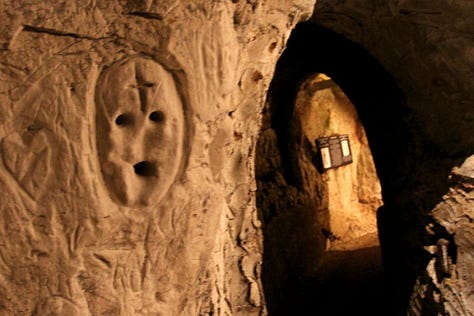
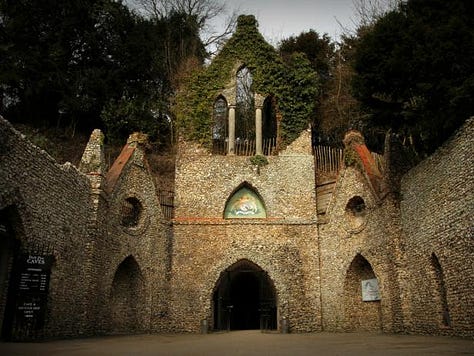
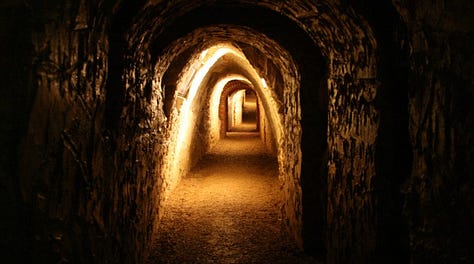
— Scenes from the Hellfire Caves.
“There is something behind the throne GREATER than the king himself.”
— William Pitt the Elder, Prime Minister of England (1756-1761, 1766-1768)
During his time in London and his membership in the Hellfire Club, Franklin rented a home at 36 Craven Street, a stone’s throw from Trafalgar Square and the River Isis (Thames). In 1998, renovations on the historic home led to the discovery of human bones buried in the basement, dating to the time period when Franklin inhabited it. “From a one-meter-wide, one-meter-deep pit, over 1,200 pieces of bone were retrieved”, including the bones of at least six different children and nine adults (emphasis mine):
Paul Knapman, the Westminster Coroner, said yesterday: "I cannot totally discount the possibility of a crime. There is still a possibility that I may have to hold an inquest."
— The Sunday Times, February 11th, 1998
Most historians are keen to handwave these grisly findings away — allegedly the aftermath of rogue autopsies performed by Franklin’s flatmate. However, the authorities were significantly more circumspect in the initial aftermath of this finding. Given the fact that references to “the sacrifice of maidens” has been found in the Hellfire Club’s correspondence, there is a very real possibility that the reason the bones of dead children were found in Benjamin Franklin’s basement is entirely nefarious in nature.
While the hedonistic tendencies of Benjamin Franklin are openly discussed by mainstream historians, his occult affiliations are less so (emphasis mine):
[Franklin] was a Quaker but had become a Freemason in 1731 when he joined the Lodge of St. John in Philadelphia, which was the first recognized Masonic lodge in America. At the time he was inducted Franklin was working as a journalist and he wrote several pro-Masonic articles which were published in The Pennsylvania Gazette.
In 1732 he helped draft the by laws of his lodge and in 1734 he printed the Constitutions which was the first Masonic book ever issued in America. He eventually rose to Grand Master of the St. John's lodge and in 1749 was elected Grand Master of the Province. While in France in the 1770s, as a diplomat for the American colonies, Franklin was made Grand Master of the Nine Sisters Lodge in Paris. Members of the Lodge included [Georges] Danton, who was to play a crucial role in the French Revolution, the Marquis de Lafayette and Paul Jones, both of whom fought in the American War of Independence.
— Michael Howard, The Occult Conspiracy: Secret Societies - Their Influence and Power in World History
Amidst the political maneuverings of high level Masons during the 1700’s, Franklin was inescapably intertwined with the machinations behind both the American and French Revolutions.
— Statues of Benjamin Franklin and George Washington in front of the Masonic Temple of the Grand Lodge of Pennsylvania.
After the the coronation of King George III in 1761, the Hellfire Club’s prominence within British politics grew considerably. Almost immediately after his coronation, George III swiftly appointed Bute as Prime Minister, Sandwich as First Lord of the Admiralty, and Dashwood as Chancellor of the Exchequer. This alignment of key positions hints at the Club's growing influence, with this group of advisors colloquially becoming known as the “King’s Friends” (emphasis mine):
The Hell-Fire Club played an important part in forming the young King’s mind…
It was the men like Bute and Sandwich who deliberately used the power of the club to influence the young King. By now the club had at least one top-flight representative from every influential group in the country — art, literature, and politics. Though the great men of the day — Selwyn, Sterne, Vansittart, Hogarth, Walpole, and Fox — had their nobility, they also had their lusts. It was to these lusts that the club catered — sex, drink, gambling, and, more subtly, the desire to belong to a secret organization with elaborate, mystical trappings engaged in ceremonies too awful for even the young hell-rakes of Vauxhall and Ranelagh.
— The Hellfire Club
Then, like now, political pawns are captured by catering to the forbidden lusts of powerful men. As Dashwood assumed control over England’s financial matters, the whispers of the Hellfire Club's shadowy influence over the country's governance grew louder.
Of Franklin’s time as America’s diplomat in England, no period is more pivotal than the Hutchinson Letters scandal in 1773 (emphasis mine):
Probably through his connections at the Hell-Fire Club, Franklin managed to get hold of a number of letters written by various prominent men in the colonies to the King’s Friends. The most important of these letters was written by Governor Hutchinson of Massachusetts, asking for troops to suppress the rebellious colonists. Franklin sent these letters to Adams and Hancock, who at once published them in the American newspapers. The Hutchinson Letters, as the whole collection came to be called, touched off a series of events that led directly to the American Revolution.
Angry mobs demonstrated against Hutchinson and the other letter writers. Adams and Hancock held a hasty conference with the other revolutionary leaders. It was decided that with troops on the way, some act must be committed that would cause an irreparable breach with England. The answer was, the [Masonically-led] Boston Tea Party.
— The Hellfire Club
With a trail of events leading to revolution and bloodshed, it is only natural that we find a coven of Luciferians at heart of the matter. After this supposed breach of trust, Franklin was dismissed from the Hellfire Club and eventually went back to America. The Masonic affiliations of its members, both current and former, persisted however.
The downfall of Dashwood's Hellfire Club had been unfolding long before this scandal. As the Club's activities came under increasing scrutiny, fueled by “sensationalist” rumors and “exaggerated” tales, public opinion turned sharply against its members. Before his death in 1774, Paul Whitehead, the secretary of the order, burnt all incriminating records; preventing all but the conspirators from truly knowing the inner workings of this secretive group.
It was in many ways the genesis of this modern blight in the West: the spiritual root of the cryptocracy is one characterized by secrecy, sex, and Satanism.
“There is no grace: there is no guilt: This is the Law:
DO WHAT THOU WILT!”
— Aleister Crowley, Arch-occultist & founder of Thelema
The dark allure of the Hellfire Club extended beyond mere revelry and hedonism for its members, for occult rituals and esoteric rites lay at the heart of its activities. The members of the Hellfire Club, through their social status, wealth, and connections, wielded incredible influence in English and French political circles. Because of this, Benjamin Franklin is said to have joined this group in the hopes that he could convince its members to stave off the Revolutionary War. Yet, he and the order’s actions are most directly responsible for a series of events that incited that very war.
Like similar scandals today, rumors of bribery, blackmail, and clandestine dealings swirled around the club. The Hellfire Club would eventually become one of the most influential occult groups in history, a nexus where Satanism, carnality, and conspiracy all intersected. This has, and naturally still does, lead the curious into speculation about the club's role in shaping political decisions and agendas — particularly in the Revolutionary War Era of the 1760’s to 1780’s.
— The Pagan Temple located on Little Saint James, also known as Epstein or “Lolita” Island.
Chronicling the defamatory deeds of these devilish dilettantes provides us a glimpse into the corrosive plague of occultism and pedophilia, a plague that now utterly ravages the West. Of the many salacious details in the aftermath of the Epstein saga — his serial predation on underage “Gentile” women, his affiliations with Israel, or the dubious nature of his demise — in my eyes, the pagan temple built on his island remains amongst the least explored and yet most critical looks into the mindset of today’s elites. Undergirding the defilement and ritual sacrifice of the innocent is a worship of pagan symbols and demonic deities.
Since their documents were ritually incinerated, one can only surmise what blackmail, and thus political leverage, this group had garnered during its operation. That it managed to secure the levers of power at the heights of the British Empire is a testament at the very least to the ruthless and cunning nature of its members. The Hellfire Club wasn’t an aberration: it was the progenitor.
It was a harbinger of what was to come, the forerunner for future fiends.
The underlying control mechanism of the Novus Ordo is and always will be sex.
— Hellfire, digital art, 2024.
“19 Fret not thyself because of evil men, neither be thou envious at the wicked;
20 For there shall be no reward to the evil man; the candle of the wicked shall be put out.”
— Proverbs 24:19-20 KJV



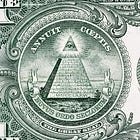
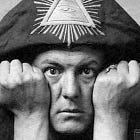
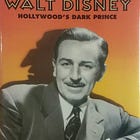



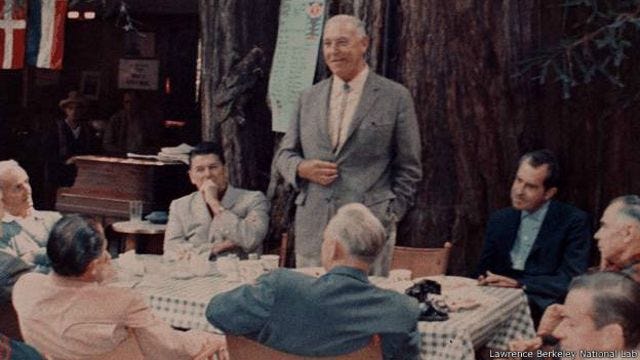
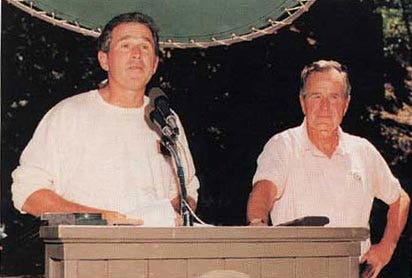
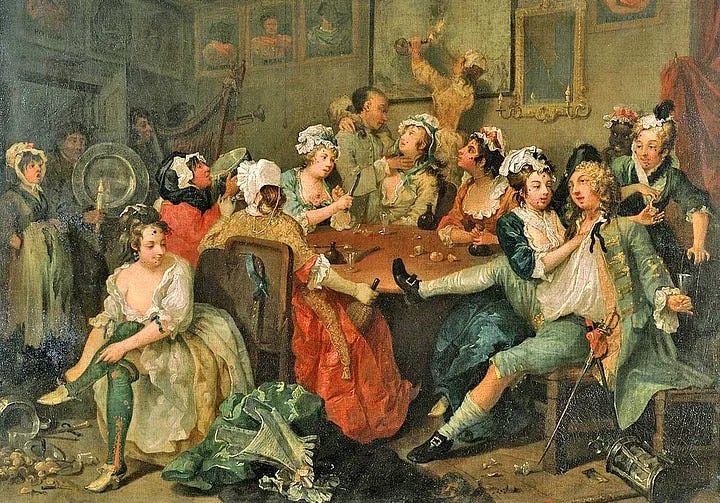
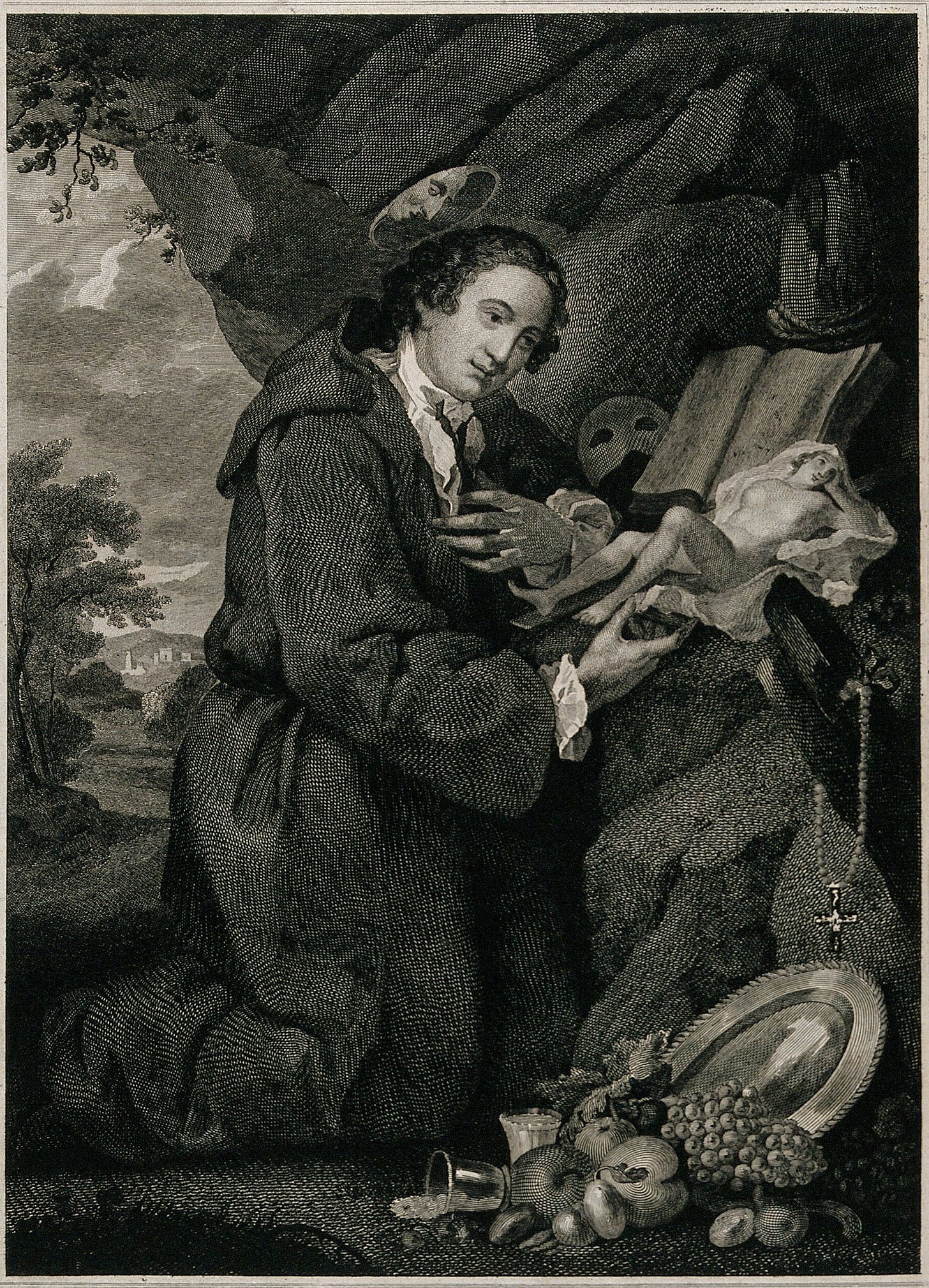
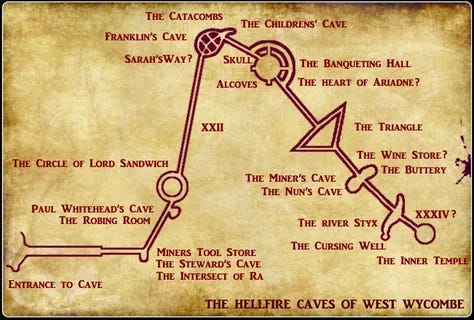


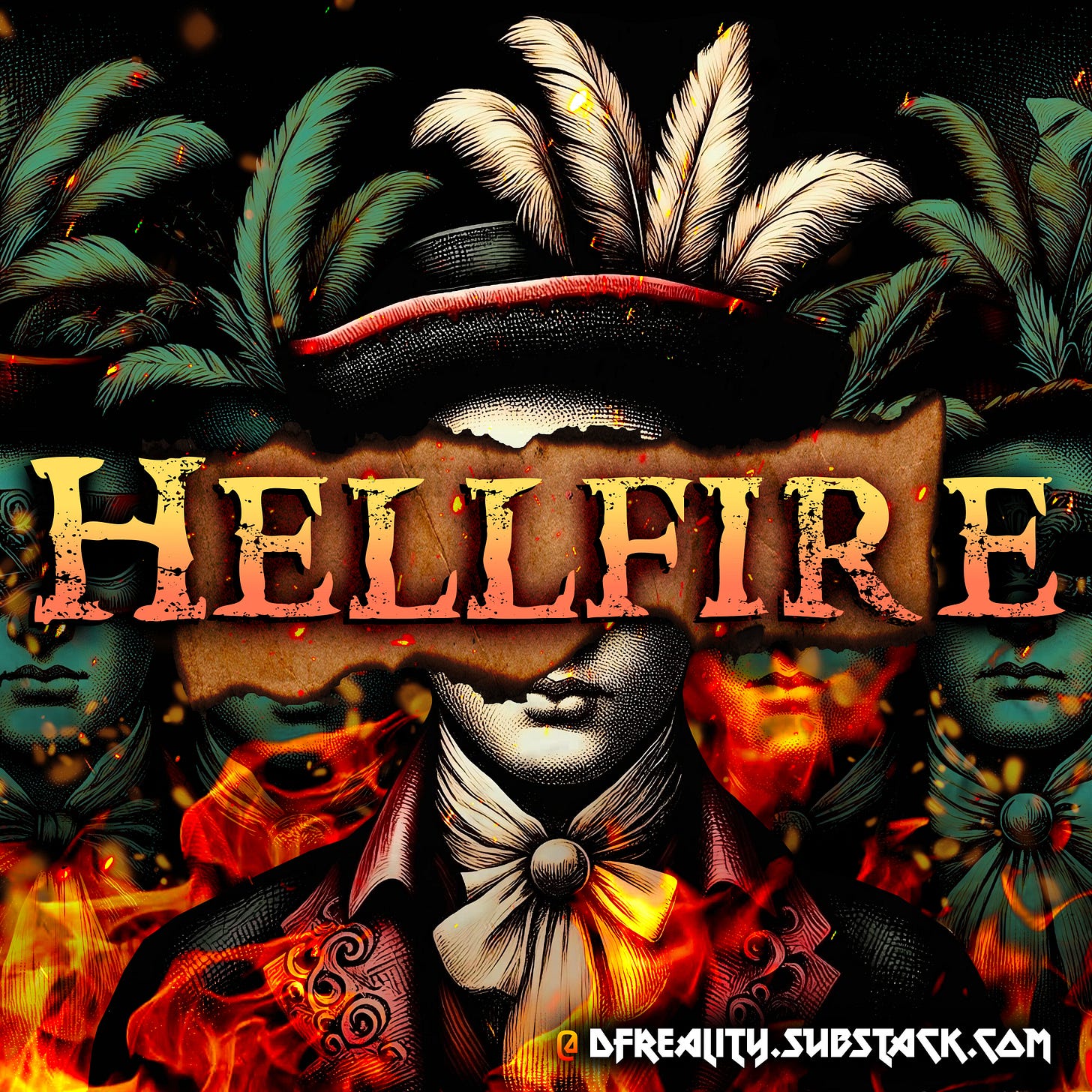
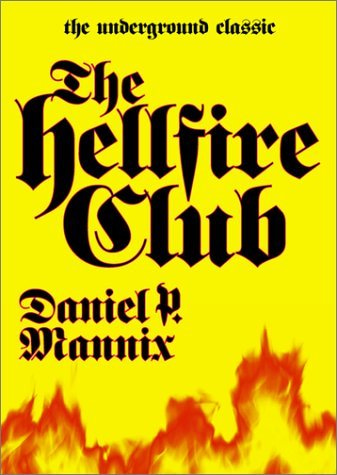
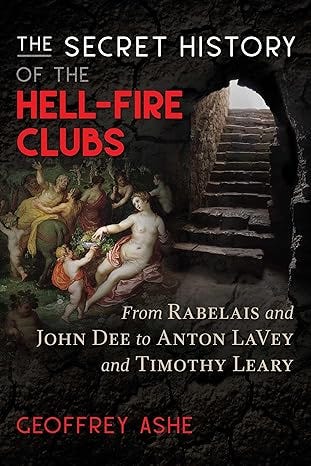
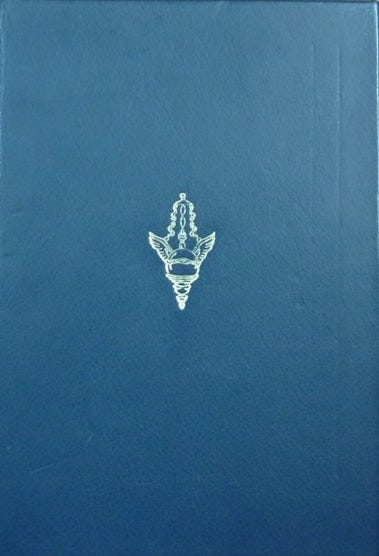
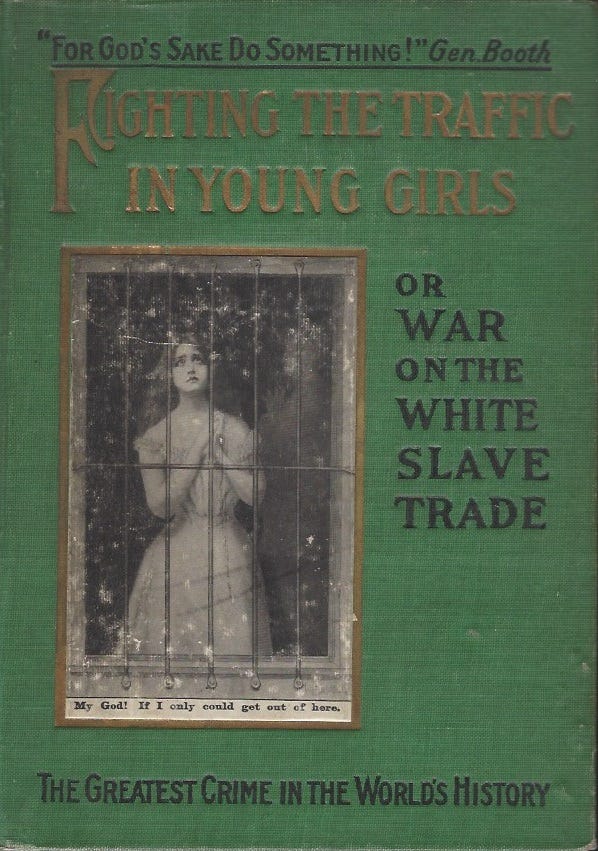
I have some additional information about Uncle Ben that I have both lucked into and dug out over the years and that I have been able to confirm in going back through the genealogy research my aunt put together over decades. Benjamin Franklin's parents were something like my 11th great grandparents. The fact is they were Jews. She was actually a Folger and could not have been anymore Jewish (think Folger's coffee dynasty). This has been almost completely covered up and almost no one is aware of it because a concerted effort was made to cover the real ancestries of many of these "revolutionary" movers and shakers who were either Crypto Jews, Crypto Phoenicians or often both. My family tree is chock full of this deception on both sides and it has been my diligence and nose for this kind of thing that has exposed it all. No one in my family knew we had actual Jewish ancestry and it explained why some of that morphology was still quite obvious in my Dad and his sisters.
Quakerism was actually a construct invented by these families that allowed them to be "white" and "protestant" without actually mixing with real gentiles. The Franklins in England began as Franks during the Norman invasions and quickly changed to Frankland as they assimilated into the aristocracy. Franklin was later derived from that. This transition is true of many names people believe are English but didn't start out that way.
Historical accounts of who the Franklins were and what their status was are nearly completely fictional. They were never poor. It actually appears the entire family was working for the British government doing whatever nefarious tasks needed doing. The fact is nearly the entire extended family was in the newspaper business and there was never any shortage of money when these papers were being started. Ben himself was said to have been a poor apprentice but started his own newspaper by the time he was about 21. The British government used loyal families like the Franklin's and the Bennett's (my Mom's side) to run their propaganda campaigns from the earliest days of the colonies.
The real history of this country is nothing like what we have been taught. And the people who manufactured that history were also not who people believe they are now. Benjamin Franklin was brought up in a Crypto-Jewish family of agents for the Crown and remained an asset his entire life. None of the rest of what you have written about here is that shocking when seen in this light is it?
Fascinated as always ~ your work is amazing. May the mighty and merciful hand of our God guide and guard you always.